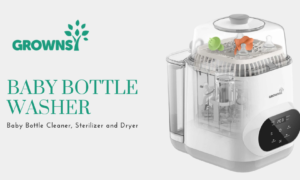Let us review some of the important steps that should be considered before purchasing your first diaper production line from a vendor; let us review some of the common mistakes first-timers usually commit.
1) If you want to be a diaper manufacturer, are you really interested? Many good traders turn out to be lousy manufacturers because they don’t understand what they’re getting into, or no one tells them. Get all the facts! If your current diaper suppliers know that you plan to become a manufacturer like them, you will be treated very differently. I believe it’s better to have alternatives ready just in case than to keep it a secret. A failure to become a manufacturer means starting from scratch unless you have your own private label.
2) You should start by looking at your market potential and your own budget before defining the product features you want from a machine vendor. A simple criterion to define machine speed is to make sure you can sell at least one shift of production at the expected cruise speed within the first 3 to 6 months after the installation. The chances of getting raw materials directly from the raw material suppliers are slim if your baby diaper production line needs a speed of less than 250 diapers per minute. In order to survive as a micro-manufacturer, you must pass a critical volume that is specific to your region; below this critical volume, you are basically doomed. If you want to survive, you cannot buy from intermediaries, you have to think carefully. You should attend industry shows at this stage of your project to familiarize yourself with equipment and raw materials.
3) Make sure you ask for the same exact items or the same diaper machine features to all potential vendors; the acceptable performance of your equipment as well as the product design must be clearly defined in your purchasing contract. A vendor can promise anything, and many will do anything they can to try to close the deal, but to deliver against a well-defined contract is another matter. Few vendors will be willing to take the risk. A factory running the equipment is always better than a manufacturer’s showroom. Of course, this is not always possible.
4) Don’t forget to keep enough money in your pocket after placing an order to use as working capital. If you already have excellent credit ratings, you probably won’t need more than half of your investment in the machine and building to run your new business. Having no money in your pocket when starting a diaper factory is the absolute worst thing you can do.
5) Ensure that your technical team has solid manufacturing experience. You must have them ready well before you are called for the final acceptance test by the vendor. Hiring key personnel under pressure is a bad business decision. Learning by mistake at your facility will prove extremely costly. While still at the vendor’s site, it may be a good idea to hire an expert to assist you during the acceptance test, to ensure the machine meets your requirements and provide advice on how to properly train your staff.
6) Don’t forget to take into account all of your training needs while at the OEM, such as product size changes, electronic calibrations, and stack count changes. Ensure that you buy enough material to complete the run test according to the negotiated performance, not just for one size but at least two. If the contract was written correctly, both parties should feel the pressure. A common mistake is to be forced by the vendor to take the machine away without passing the acceptance test, mainly because you ran out of material or sometimes because they misused the materials during a long or painful start-up process. In order to avoid paying for broken dishes, penalties must be included in the contract. Typically, the vendor promises to fix the machine during installation at your factory; however, this is rarely the case. If the machine is not fixed at the vendor’s, with all resources nearby, it is unlikely to ever be fixed again.



































